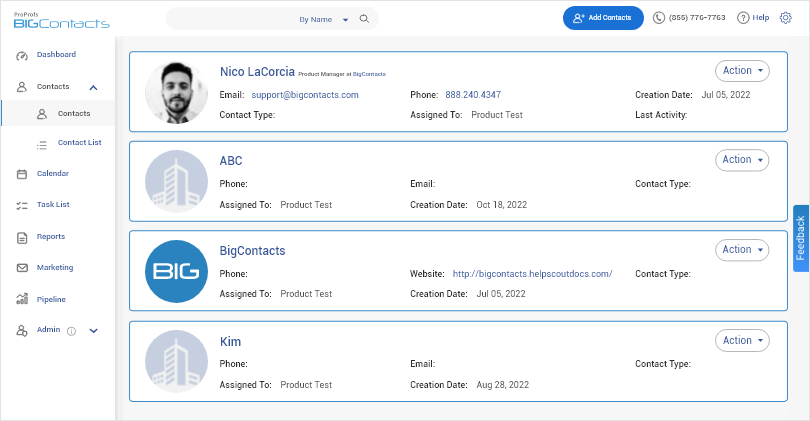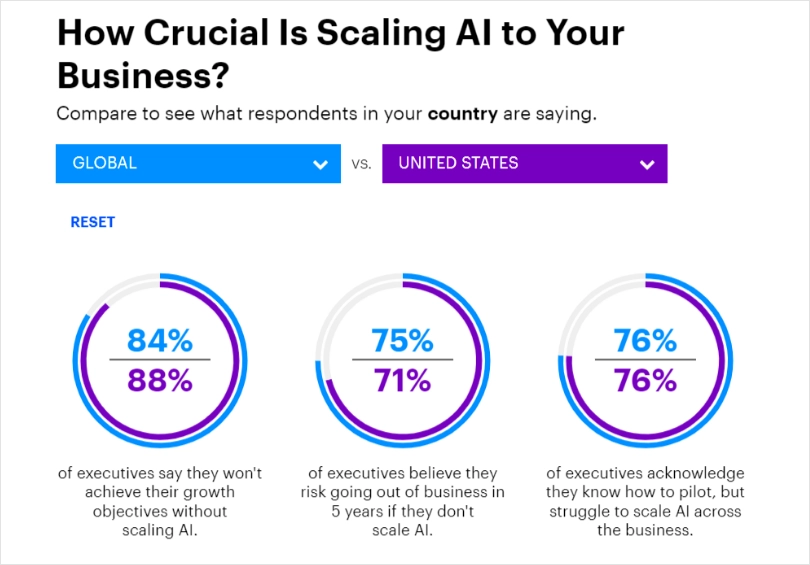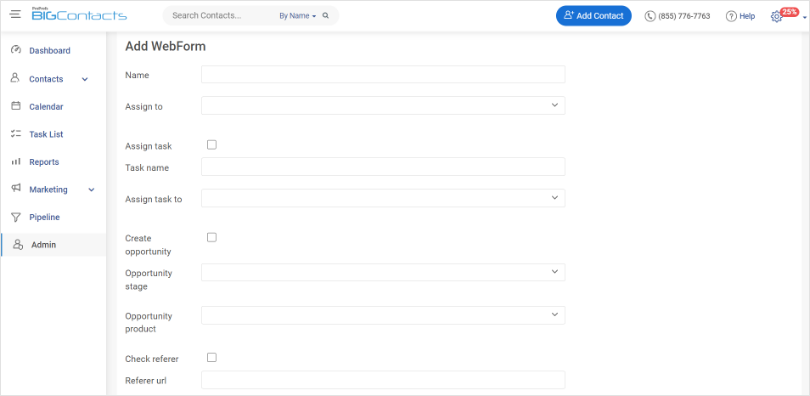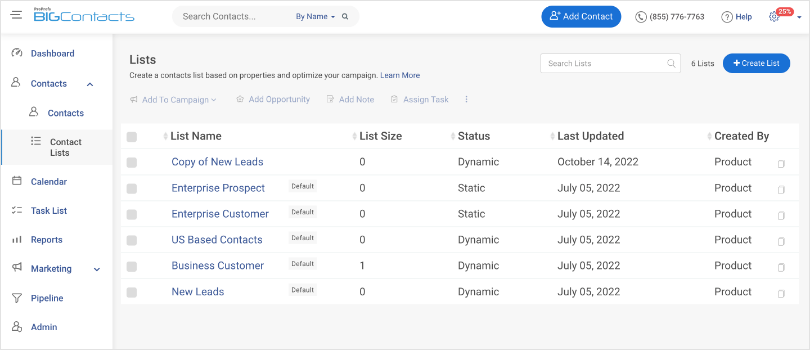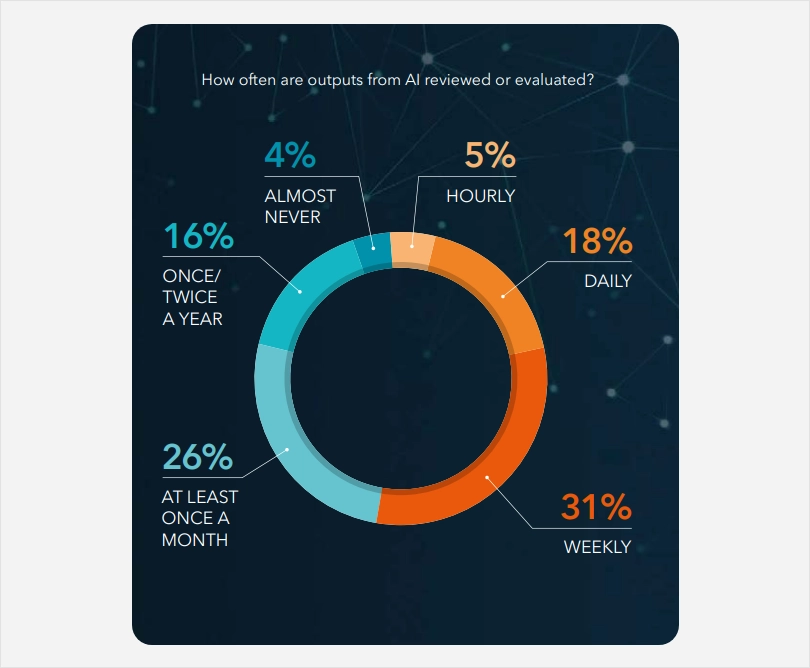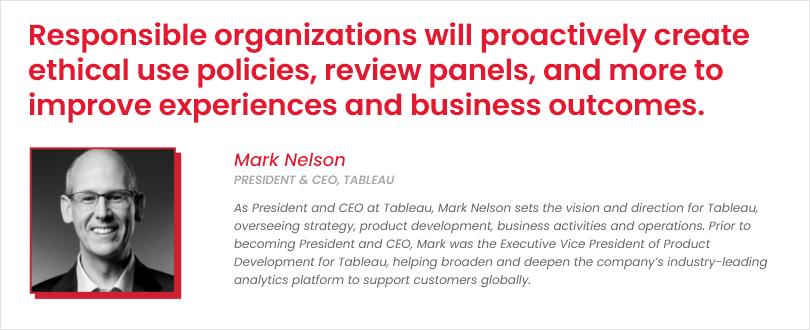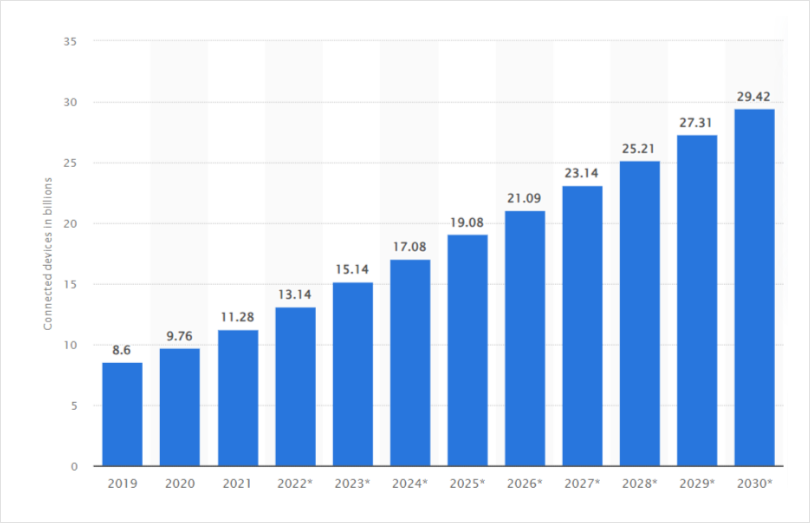Imagine a world where every customer interaction is seamless, every insight is accurate, and every decision is driven by reliable data!
Achieving this level of efficiency and precision requires you to standardize contact data.
While this may seem daunting at first, artificial intelligence’s lightning-fast analytical capabilities and ability to learn patterns makes it a breeze.
By leveraging advanced algorithms and machine learning techniques, AI systems can transform raw data into standardized, error-free formats efficiently and effectively.
No more manual data scrubbing and error correction!
From the first point of contact to nurturing long-term customer relationships, AI takes center stage, revolutionizing how businesses operate. Join us as we dive into the transformative world of AI-powered contact data standardization, where efficiency, accuracy, and productivity reign supreme.
In a Nutshell
Standardization enhances data integrity, making it easier to perform data analysis, segmentation, and targeted marketing campaigns.
Manual contact data standardization is time-consuming, leads to human errors, and has scalability limitations.
AI emerges as a powerful solution for contact data standardization, leveraging machine learning algorithms to efficiently and accurately standardize vast amounts of customer information.
By adopting AI for contact data standardization, you can unlock the full potential of your data. This enables personalized marketing, improves customer experiences, and supports data-driven decision-making.
What is Contact Data Standardization?
Contact data standardization is the process of ensuring data is consistent and accurate across all systems and platforms. It maintains uniformity in the format and structure of your contacts’ information.
The process involves cleaning, organizing, and harmonizing data elements like names, addresses, phone numbers, email addresses, and other information stored in your CRM system.
By standardizing contact data, you can-
- Eliminate duplicates
- Improve data quality
- Reduce errors or inconsistencies
- Enhance business processes
- Avoid lost sales or poor customer service experiences
Let’s understand this process with the help of an example.
Suppose you have the following entries originally:
- John Doe, [email protected], 123-456-7890
- Jane Smith, [email protected], (555) 123-4567
- Alex Johnson, [email protected], 5551234567
Standardizing these entries would require removing any leading or trailing spaces, converting all letters to lowercase or uppercase for consistency, ensuring a consistent format (e.g., ###-###-####), and so on.
After performing contact data standardization, the contact entries would look as follows:
- John Doe – [email protected] – 123-456-7890
- Jane Smith – [email protected] – 555-123-4567
- Alex Johnson – [email protected] – 555-123-4567
By standardizing the contact data, inconsistencies in email addresses and phone numbers are resolved, making it easier to manage, search, and analyze the data. It ensures a uniform structure and format for each entry, improving data integrity and facilitating efficient processing.
Understanding the Challenges of Contact Data Standardization
If you standardize contact data manually, you may come across the following challenges.
- Formatting issues: There can be differences in spelling, capitalization, or punctuation, making it difficult to standardize the data.
- Data type inconsistency: Contact data types may vary across systems, leading to data fragmentation and compatibility issues.
For instance, customer phone numbers may be saved as strings in one system, while another system may only permit numbers with eight digits. - Data quality issues: Missing or incorrect data pose challenges in standardizing contact information.
- Human errors: Manual data entry is prone to mistakes, resulting in inaccuracies and duplicate entries.
- Handling large volumes: Dealing with a large volume of contact data requires efficient processing and validation methods.
- Time & resource allocation: The need for manual scrutiny make the standardization process time-consuming and resource-intensive.
- Changing requirements: Data standardization needs may evolve over time, requiring adaptation to new business needs and regulations.
- Balancing standardization & context: Striking a balance between standardization and preserving relevant details is crucial.
- Managing interconnected data: Contact data often has a complex relationship with other data elements, adding complexity to standardization efforts.
AI-Powered Contact Data Standardization
According to Accenture, 84% of C-suite executives believe they must use AI to achieve their growth objectives.
AI-powered contact data standardization leverages machine learning algorithms, natural language processing, and pattern recognition to automate the process.
These AI systems analyze and transform raw data into standardized, error-free formats. The advanced capabilities of AI streamline contact management, ensure accuracy, and drive efficiency.
AI for contact data standardization offers a myriad of benefits-
- Improved data quality: AI algorithms can identify and correct errors, inconsistencies, and duplicates in contact data, ensuring its accuracy and reliability.
- Enhanced efficiency: AI automation minimizes manual effort, saving time and resources previously spent on data cleansing and standardization.
- Consistency across channels: AI ensures uniformity in contact data across various touchpoints, providing a seamless and personalized customer experience.
- Actionable insights: Standardized data sets the foundation for accurate analytics and data-driven decision-making, empowering organizations to derive meaningful insights.
Implementing AI Solutions for Contact Data Standardization
Follow these steps to effectively use AI for contact data standardization within your CRM system.
Data Preparation:
Before implementing AI, it is essential to collect and organize contact data. This may include information such as names, addresses, phone numbers, and email addresses.
Once you create a detailed database, clean and preprocess the data to ensure optimal results. This includes removing duplicate entries, correcting formatting issues, and handling missing or inconsistent data.
Suppose you have a CRM system with contact data from various sources. You collect data from online forms, manual entries, and data imports.
During data preparation, you have to clean up the data by removing duplicates and standardizing formats. For instance, you ensure that all phone numbers are in a consistent format, such as “(800) 555‑0175.”
Feature Extraction:
Once the contact data is prepared, the next step is to identify relevant features for standardization.
Features are specific attributes or characteristics of the contact data that can be used to differentiate and standardize them. AI techniques can be employed for meaningful feature extraction.
Suppose you want to standardize the salutations in contact names, such as “Mr.,” “Ms.,” or “Dr.”
With AI, you can extract this information from the contact names and create a separate feature for salutations. This feature can then be used to standardize salutations across the dataset, ensuring consistency.
Algorithm Selection:
Various algorithms can be employed for contact data standardization, such as rule-based approaches, machine learning algorithms, or deep learning models. The selection depends on factors like the complexity of the data, available computational resources, and desired accuracy.
For instance — You have a large dataset with diverse contact data, including names, addresses, and phone numbers.
To standardize it, you need a combination of rule-based approaches and machine learning algorithms. Employ regular expressions to extract components from addresses and a machine-learning algorithm to classify and correct spelling errors in contact names.
Model Training:
Once the algorithm is selected, the next step is to prepare training and validation datasets and train the AI model.
The training dataset should consist of labeled examples where the correct standardization is known. The model learns from these examples to generalize and standardize new, unseen contact data.
Let’s consider training an AI model to standardize email addresses.
You create a training dataset with a set of email addresses, each labeled with the correct standardized format. The AI model is then trained using this dataset. It learns the patterns and rules required to transform different variations of email addresses into a standardized format.
Evaluation & Refinement:
After training the model, it is important to assess its performance.
This evaluation involves testing the model on a separate validation dataset or real-world data and measuring its accuracy, precision, recall, or other relevant metrics.
Suppose you evaluate the AI model for contact data standardization and find that it misclassifies some contact names or fails to standardize certain addresses correctly.
You should then collect feedback on these errors, analyze the misclassified examples, and make necessary adjustments to the model. This iterative refinement process improves the model’s accuracy and overall performance.
AI-Powered Contact Data Standardization in Action [Proven Example]
Various AI-powered tools simplify the contact data standardization process. One such example is BIGContacts, a robust and user-friendly solution that offers a range of features to enhance contact data standardization. Some of its key features include-
Seamless Import:
BIGContacts provides a seamless import functionality, allowing organizations to easily bring in contact data from various sources. Whether it’s a CSV file, Excel spreadsheet, or integration with other applications, the import process is streamlined for efficient data transfer.
Webform Connection:
With BIGContacts, you can connect your webform directly to your CRM system. This feature ensures that the contact data captured through the webform is automatically standardized and integrated into your CRM, eliminating the need for manual data entry and reducing the chances of errors.
Field Mapping:
BIGContacts offers flexible field mapping capabilities, allowing you to map incoming data fields to specific CRM fields. This feature ensures that the data is correctly aligned according to your CRM system’s requirements, maintaining consistency and accuracy throughout the standardization process.
Segmentation:
BIGContacts enables the segmentation of contact data based on various criteria. This feature allows you to categorize and group contacts based on attributes like location, industry, or customer type. By segmenting your data, you can easily ensure personalized and targeted communications.
Read More: Customer Segmentation Analysis [The Only Guide You’ll Need in 2023]
Data Enrichment:
BIGContacts can enrich customer profiles by automatically gathering data from various sources and enhancing customer profiles with attributes like demographic data, social media activity, purchase history, and more.
This enriched data provides a comprehensive understanding of customers, enabling you to personalize interactions and deliver more relevant experiences.
Automated Updates:
BIGContacts offers automated updates, ensuring that your contact data remains standardized and up to date. Whether it’s changes in addresses, phone numbers, or email addresses, the system can automatically identify and apply the necessary standardization rules, keeping your data accurate and reliable.
8 Best Practices for Effective Contact Data Standardization
To maximize the benefits of contact data standardization with AI, you should adopt the following best practices.
Data Privacy & Security:
Data privacy and security are paramount when you use AI to standardize contact data.
Ensure compliance with data protection regulations, such as the General Data Protection Regulation (GDPR) or the California Consumer Privacy Act (CCPA).
Implementing security measures, such as encryption and user access controls, safeguards sensitive customer information from unauthorized access or breaches. By prioritizing data privacy and security, you can maintain the trust of your customers and uphold ethical standards.
Regular Updates & Retraining:
Contact data is dynamic, with constant changes in customer information.
To ensure accuracy and relevancy, you should regularly update and retrain your AI models. Incorporating updated datasets and training algorithms help the AI model adapt to evolving trends, changes in naming conventions, and new data formats.
Human Oversight:
While AI-powered contact data standardization offers automation and efficiency, there may be nuanced or complex cases that go beyond the capabilities of AI algorithms.
A study by SAS found that over 74% percent of successful companies review their AI output at least weekly.
Human experts can handle unique cases that require subjective judgment, handle data anomalies, and make corrections when AI algorithms may not provide the desired results. Human oversight acts as a safety net, ensuring the accuracy and integrity of the standardized data.
Scalability & Automation:
As the data volumes continue to grow, scalability becomes a crucial consideration.
AI-powered solutions should be capable of handling increasing data volumes without compromising performance or accuracy. It’s essential to choose AI tools and technologies that can scale seamlessly to accommodate large datasets and growing business needs.
Additionally, automation plays a vital role in contact data standardization. Leveraging AI automation capabilities streamlines the standardization process, saving time and resources while maintaining consistency and accuracy across the entire dataset.
Data Validation & Verification:
Implementing data validation processes, such as validating email addresses or phone numbers, helps identify and eliminate invalid or incomplete data. Verification mechanisms, such as double-checking data against trusted sources or using verification APIs, can further enhance data accuracy.
Data Governance & Documentation:
Define data standards, naming conventions, and formatting guidelines to ensure consistency across the organization. Create a data dictionary or data schema that documents the attributes and fields used for contact data standardization.
Proper documentation maintains clarity, facilitates collaboration among team members, and ensures that everyone follows consistent practices when working with contact data.
Regular Data Audits:
Performing regular data audits is essential to identify and rectify any inconsistencies or errors in the standardized contact data. Conduct periodic checks to verify the accuracy, completeness, and consistency of the contact data.
Data audits help identify outdated or irrelevant information, duplicate entries, or data gaps that might have occurred during the standardization process.
Read More: How to Keep Your CRM Data Clean: 10 Best Practices to Get Started
Quality Assurance:
Contact data standardization is an ongoing process, and continuous monitoring and quality assurance are critical to ensure its effectiveness.
Implement mechanisms to monitor the quality of the standardized data regularly. Set up alerts or notifications to flag potential data anomalies or inconsistencies. Periodic quality assurance checks validate the accuracy of the standardized data against trusted references.
Compliance & Ethical Considerations in AI-Powered Contact Management
While AI offers tremendous benefits in contact data standardization, it is crucial to consider compliance and ethical considerations.
Adhere to data privacy regulations and ensure proper handling and protection of customer information. Transparency, informed consent, and responsible data usage should be at the forefront of your AI-powered contact data management strategy to maintain trust and uphold ethical standards.
Here’s what Mark Nelson, President & CEO at Tableau, says about creating fair and ethical AI-powered solutions.
Following are some key points to consider regarding compliance and ethical considerations in AI-powered contact data management.
Data Privacy Regulations:
Adhere to data privacy regulations that define how personal data should be collected, processed, and protected. Implementing robust security measures and obtaining proper consent from individuals is crucial for compliance.
Transparent Data Usage:
Transparency in data usage is essential to build trust with customers. Provide clear information on how contact data is collected, processed, and used. Transparency ensures individuals are aware of how their data is being utilized and empowers them to make informed choices about their data privacy.
Responsible AI Practices:
Use unbiased algorithms, avoid discriminatory practices, and address any biases that might arise from AI models. Responsible AI practices help ensure fairness and prevent potential harm caused by biased decision-making.
Ethical Data Handling:
Ethical considerations involve treating contact data with integrity, respecting individual privacy rights, and safeguarding sensitive information. Implement ethical data handling practices, including secure storage, access controls, and data anonymization when necessary.
The Future of AI-Based Contact Data Standardization – Trends to Look Out For
As the field of AI continues to evolve, several future trends are shaping the landscape of contact data standardization. Here are some key future trends holding exciting possibilities.
Advanced Natural Language Processing (NLP):
NLP enables machines to understand and process human language.
The global market size for NLP is projected to grow to $112.28 billion by 2030 at a CAGR of 24.6%.
Future trends involve the development of more sophisticated NLP algorithms capable of extracting valuable information from sources such as emails, social media posts, and customer feedback.
Integration of Machine Learning & Deep Learning:
Machine learning (ML) and deep learning techniques are becoming increasingly integrated into AI-based contact data standardization processes.
ML algorithms can learn from patterns and make predictions or decisions, while deep learning models, such as neural networks, can process vast amounts of data to extract valuable features automatically.
The combination of these techniques enables more accurate identification of errors, inconsistencies, and duplicate entries.
Improved Data Quality Assessment:
Future trends in contact data standardization involve the development of advanced techniques for assessing data quality. AI algorithms can be used to assess the completeness, accuracy, and consistency of contact data, providing organizations with actionable insights for further improvement.
Predictive Analytics:
Predictive analytics involves analyzing historical data to make predictions about future events or behaviors. With advanced algorithms and machine learning techniques, predictive analytics can uncover patterns and trends to provide valuable insights for decision-making.
Blockchain:
Blockchain technology is a decentralized and immutable digital ledger that allows secure and transparent record-keeping of transactions.
It can enhance traceability, transparency, and trust by enabling the immutable recording of transactions and sharing of information. It can help address issues such as counterfeiting and compliance with regulations.
Permissioned blockchains restrict participation to known partners, ensuring data standards and governance rules are followed.
Internet of Things (IoT):
The Internet of Things (IoT) is a network of devices embedded with sensors, software, and connectivity to collect and exchange data.
Statista forecasts that the number of IoT devices will increase from 9.7 billion in 2020 to more than 29 billion in 2030.
These devices can provide real-time insights, increase data collection and visibility, enable proactive decision-making, and optimize processes.
Unlock the Untapped Power of Your Data With AI
Using AI to standardize contact data presents a transformative opportunity for your business.
By embracing this cutting-edge technology, you can revolutionize your CRM system, streamline operations, and unlock the untapped potential of your customer data. Through improved data quality, enhanced efficiency, and reliable insights, you stand a chance to gain a distinct competitive edge in today’s data-driven business landscape.
Start your journey with a reliable and user-friendly tool like BIGContacts. This will not only revolutionize the way you manage data but also empower you to make more informed decisions and foster stronger customer relationships.
Don’t wait any longer!
Take the leap into the future of contact data standardization and elevate your business to new heights.
FREE. All Features. FOREVER!
Try our Forever FREE account with all premium features!

